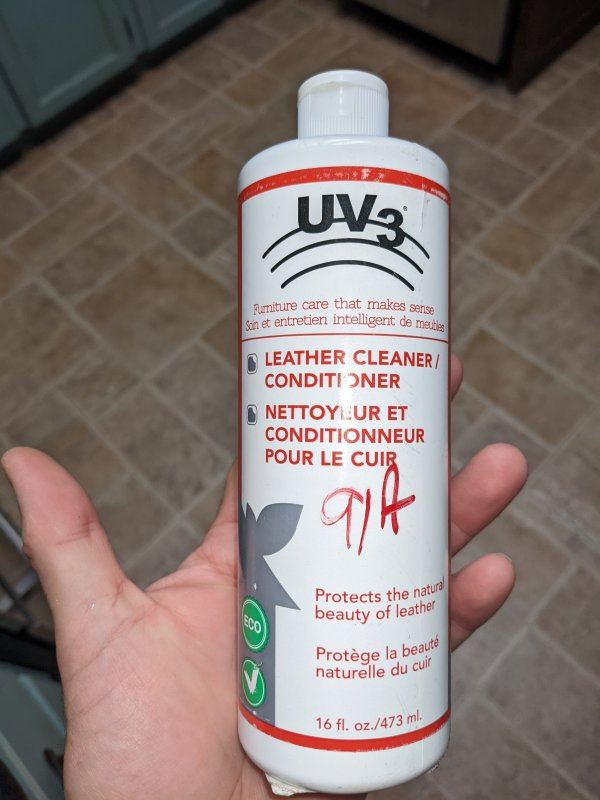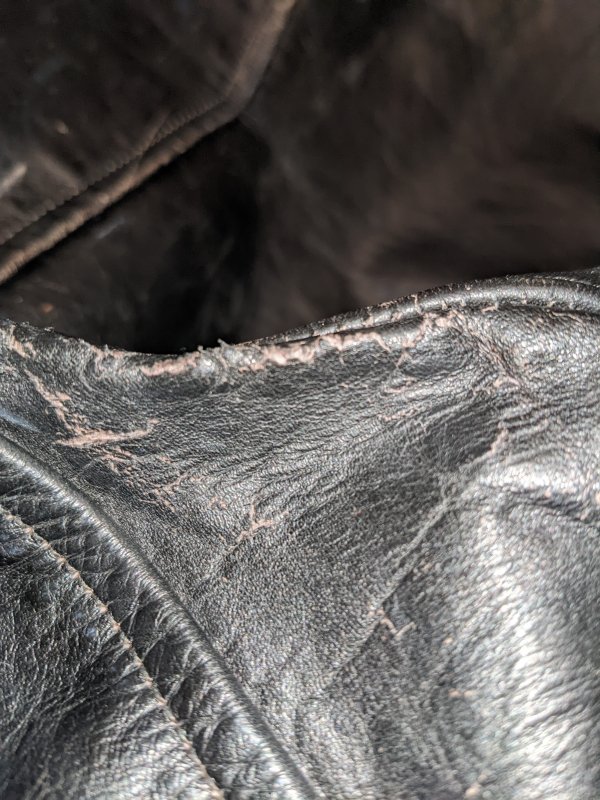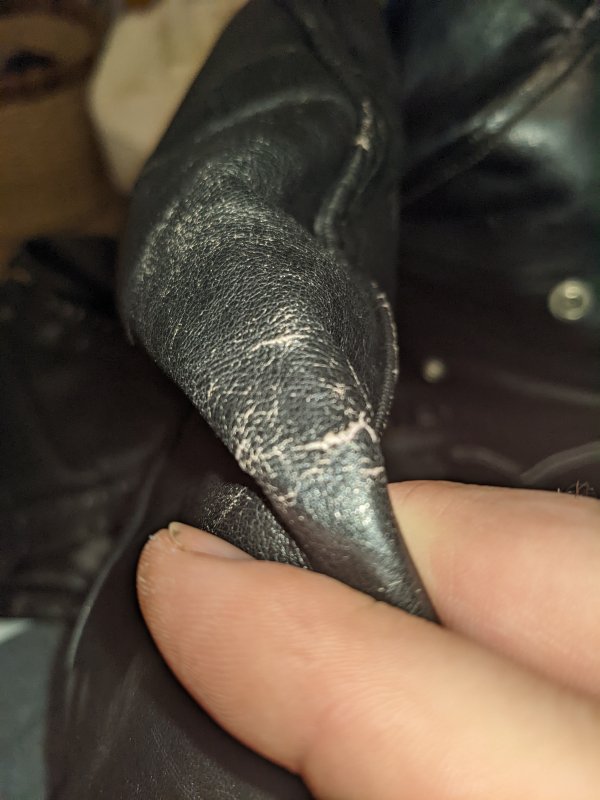Johnny Deadlifts
A-List Customer
- Messages
- 475
Hi folks, I recently was chatting with our local leather shop owners about conditioning dry, older leather jackets. I've always used Picard's with good results but they suggested UV3 Leather Cleaner and Conditioner. The couple have been in the leather repair and restoration business in this area for over 30 years so I gave it a go. It did make a difference but I've noticed some surface cracking that I don't think was there previously. It started a few weeks after using the product, but I'm not sure if it's from the conditioner or that I've barely taken the jacket off for like a month. Anyone have any experience with this product? Thanks in advance.






